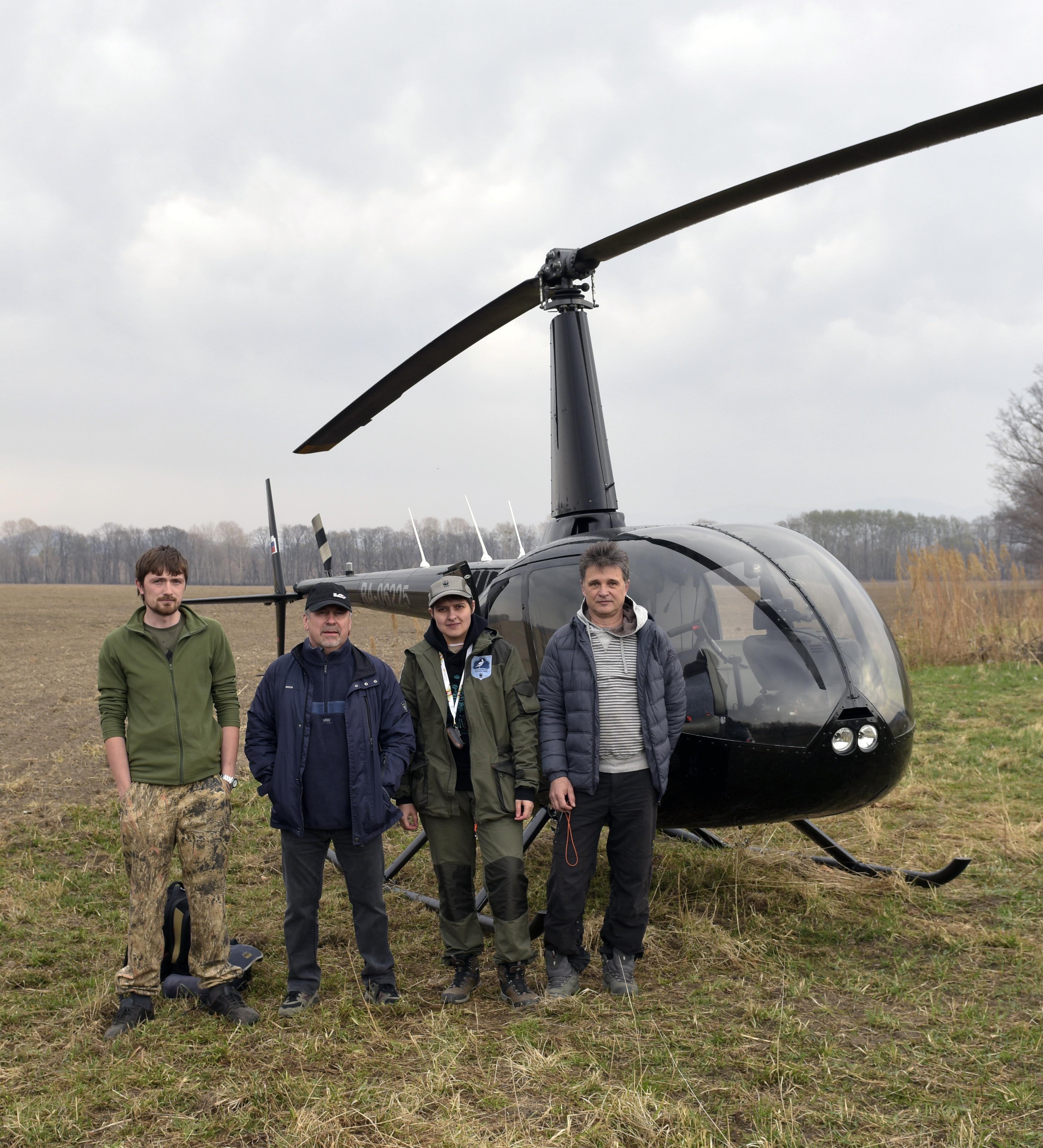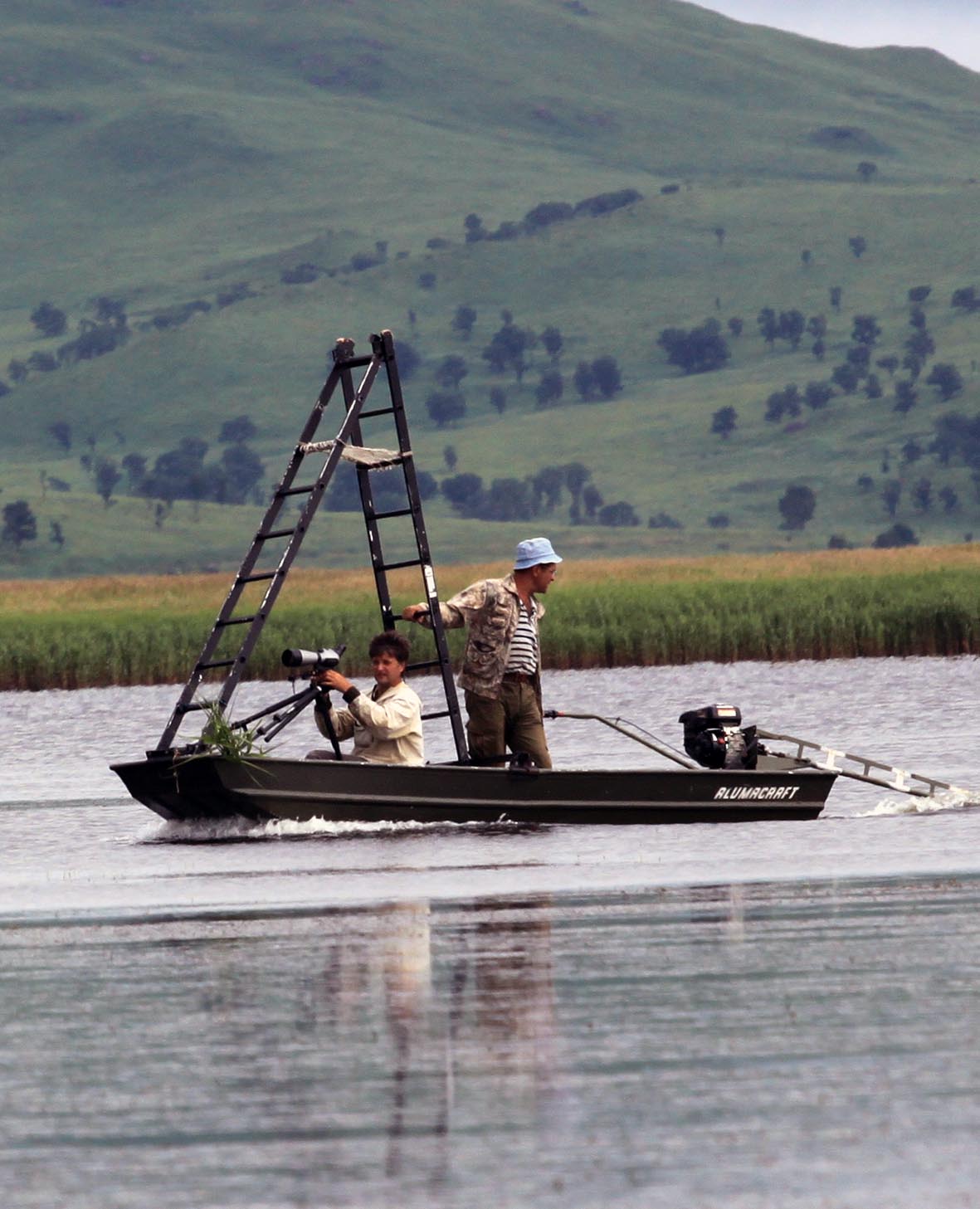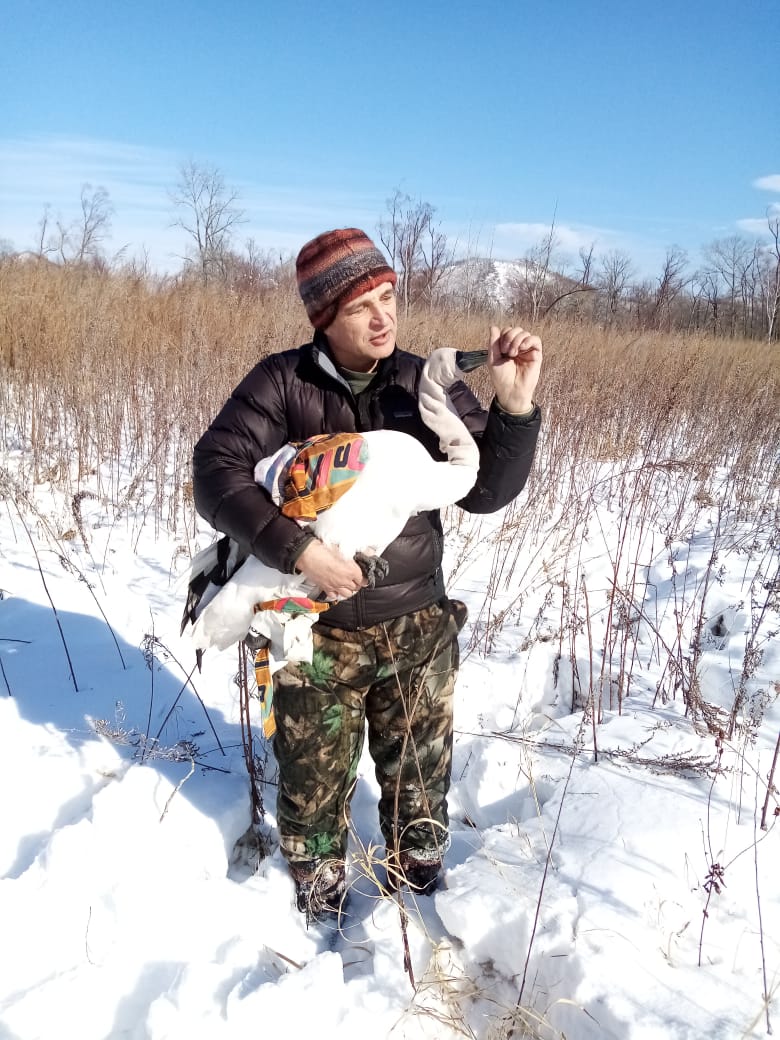LABORATORY OF ORNITHOLOGY
About
Main areas of research:
Study of Red Data Book species common to Russia and Asia-Pacific countries.
Study of Background species as indicators of long-term population trends.
Long-term monitoring of dynamic processes in bird communities.
Studying the ecology, behavior and taxonomy of selected groups of species using high-tech methods and approaches.
Applied aspects in regional ornithology (bird flu problem, ornithological safety of airports, maintaining Red Data Books, justification of new protected areas).
Methods:
Traditional visual and instrumental methods for counting bird numbers.
Modern methods of photo, video and audio recording using digital voice recorders, video cameras and photo cameras.
Ringing with various types of rings, remote tracking methods (GPS\GSM transmitters, geolocators, etc.) in the study of migrations and nesting biology.
Statistical analysis of vocalization data using following software: Adobe Audition 3.0, Raven Pro 1.3.
Methods of using unmanned aerial vehicles (drones) in field ornithology for nests counting and for other aspects of species biology.
Sampling of cloacal swabs from Anseriformes within the framework of the program "Organization of monitoring of introductions and spread of avian influenza in natural conditions on the territory of the Russian Federation."
Remote sensing using satellite images of the earth's surface for environmental assessment of the habitat of Red Data Book species.
Statistical processing of a large array of long-term data on the migrations of passerine birds in the R 3.6.0 and Statistica 10 software.
Brief history of the department:
In 1976, the Institute of Biology and Soils Sciences was appointed curator of research within the Soviet-Japanese Convention on the Protection of Migratory Birds and Their Habitats in the Far Eastern Region. N.M. Litvinenko and Yu.V. Shibaev made an outstanding contribution to these studies. In 1980, the Crane Working Group (CWG) was created with Yu.V. Shibaev as coordinator in the south of the Russian Far East. During the first ten years of the CWG activities, large-scale projects were implemented to determine the range of cranes and assess their population. After the establishment of the All-Union Ornithological Society in 1983, the ornithological group became the core of the Amur-Ussuri branch, taking responsibility for the ornithological research in the entire South of the Russian Far East. The Laboratory became an independent scientific unit in March 1989 after the transformation of the Laboratory of vertebrate animals. Until 2022, the head of the laboratory was Doctor of Biological Sciences A.A. Nazarenko, since 2022 Ph.D. T.V. Gamova is the head of the laboratory. The laboratory adjusts and expands its tasks according to current trends. From faunal research by V.A. Nechaev (since 1962) and A.A. Nazarenko (since 1963) to the study of migrations of large birds using GPS/GSM transmitters by I.M. Tiunov and S.G. Surmach at the present time. NGO Amur-Ussuri Center for Avian Biodiversity plays an important role in the scientific and contractual projects of the laboratory: the Primabirds Bird Ringing Station, environmental monitoring of oil and gas projects on Sakhalin Island, a long-term project to study the Blakiston’s fish owl, long-term participation in the development of recommendations for reducing the risks of bird strikes at Vladivostok International Airport. Many significant works are the result of cooperation. Currently, a series of molecular genetic studies aimed at clarifying or revising the intraspecific taxonomy of a number of species (Mountain hawk-eagle, Black-tailed gull etc.) is planned in cooperation with the Laboratory of Evolutionary Zoology and Genetics of the FSCEATB and with the Institute of Zoology of the Chinese Academy of Sciences. Over the past decade, laboratory staff have published 410 works. The scientific results of the laboratory indicate the critical role of the territory of the Far East of Russia in maintaining populations of rare bird species in eastern Asia and the need to continue research in this direction.



